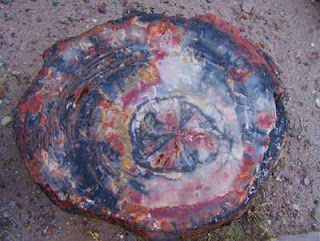Located in the heart of Apache country, Fort Apache was established on May 16, 1870. The historic fort is near the present town of Whiteriver. It’s purpose was to assist the White Mountain Apache Tribe to peacefully protect their lands.
Fort Apache is perhaps most widely recognized for association with the famous renegade leaders from various Apache bands, such as Geronimo and Cochise. Geronimo was held in the stockade and local legend has it that he just disappeared right out of his cell. My local Apache source (cashier at the museum) tells me that what happened was that Geronimo buried himself in the dirt floor. When the guard came by with his meal, he found the cell empty and left the door open as he rushed off to sound the alarm. Geronimo them got up out of the dirt and snuck out.

This is the oldest structure remaining. It was built in 1871 as the commanding officer’s quarters. I think the picnic tables on the porch were probably added more recently…

Here we see the commanding officer’s quarters built in 1892. Pretty classy looking place. The army’s idea was that such structures would give the officers and their families some little bit of the back home trappings of civilization and take the edge off the desolation.

In 1923 the US government authorized converting the fort into a boarding school for the Indians. The school was named the Theodore Roosevelt School. Initially the children were housed in the old barracks, but in 1932 dorms were built. Here you see the girl’s dorm, still in use today. Although in earlier days there were hundreds of students at any one time, there are now less than 50.

Here we see some of the girl students circa 1975.

About 4 miles from the fort sits the Kinishba ruins, occupied between 800 and 1400 AD. There is no clear evidence that this was ever occupied by Apache. It was most likely built and occupied by ancestors of today’s Zuni and Hopi. The pueblo was restored between 1931 and 1939 by the Arizona State Museum, University of Arizona students, and Apache workers. Unfortunately the ruins were not maintained after that and have again fallen into disrepair.
By the way, both of these sites are designated National Historic Sites, but they are owned and operated by the White Mountain Apache Tribe, as is the school.


















